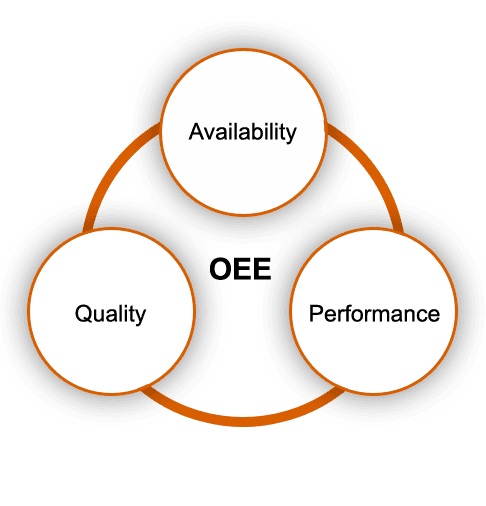OEE, or Overall Equipment Effectiveness, is a commonly used metric to measure shop floor performance. OEE is a composite metric that combines the availability, quality, and performance, and can be calculated for a device, line, or even for a part. The OEE metric can support decisions to assess normalized performance across a range of assets, assess the effectiveness of the process to manufacture a part, or even compare different shops or plants across a distributed enterprise. However, despite the possibilities, enterprises are unable to fully realize the value of decision-making based on the OEE metric due to two reasons – (1) inaccuracies in how the metric itself is calculated and (2) an inability to extract the metric out of the shop floor and integrate with enterprise systems such as ERP.
Typically, OEE is measured using a series of manual steps. The 3 components of OEE – availability, quality, and performance – are independently computed, and the resultant OEE is then manually entered into ERP systems. Plants struggle in computing these three metrics accurately:
- computing availability requires an understanding of the true state of the manufacturing process to know when the equipment was truly available to produce, and when was it actually producing a part,
- computing quality requires realtime integration and analysis of quality data,
- and finally, computing performance requires knowledge of the planned cycle time to make the part, against which the actual cycle time can be compared – the planned cycle time is always calculated manually (typically from a stopwatch experiment or CAM) since most manufacturers do not have a data-driven approach for estimating it, and can lead to massive errors in the final metrics.

VIMANA solves this problem with True OEE, powered by Machine Learning, and available for integration with 3rd party systems using APIs. VIMANA derives the true state of the manufacturing process from the equipment’s data streams to compute the availability and quality metrics, and uses machine learning to derive the true cycle time of the part, based on which the performance is computed. This automated approach to computing OEE, uncorrupted by any manual input, is also dynamic – VIMANA’s machine learning algorithms keeps up with ongoing process improvements to continuously update the true cycle time. VIMANA’s innovative approach in calculating true cycle time also gives manufacturers an honest analysis of their actual capacity – giving them the tools to identify bottlenecks and improve their capacity.
Finally, the automated integration enabled by VIMANA’s APIs makes this accurate OEE data available across all of the rest of the business systems – including ERP and MES systems – in realtime, enabling decision-makers the contextualized information they need to truly improve their productivity.
